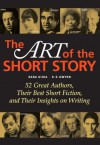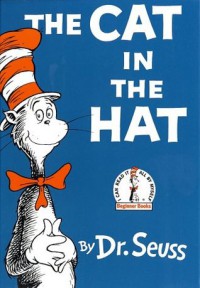Currently reading
100 Bible Verses Everyone Should Know by Heart
The Plot Whisperer Workbook: Step-by-Step Exercises to Help You Create Compelling Stories
Fuzzy Navel (Jacqueline)
Progress:
70 %
City of Bones
Progress:
144/408 pages
Walden, or Life in the Woods
Winesburg, Ohio
Progress:
45/232 pages
My Life
The Art of the Short Story
The Book of American Negro Poetry
 The Lady with the Pet Dog
The Lady with the Pet DogWritten by: Anton Chekhov
Translated By: Avrahm Yarmolinsky
The story is often translated “The Lady with the Little Dog.”
The Lady with the Pet Dog
Characters:
Dmitry Dmitrich Gurov
Anna Segeyevna (Lady)
Gurov is almost forty (40) years old and from Moscow. He is married and work s for a bank in his native city. He studied languages and literature at his university, years ago. Gurov is visiting Yalta, a resort city on the Black Sea. He normally takes in the sights of the promenade while sitting in a confectionery shop, in the afternoons. Today he spots a woman, Anna Segeyevna, walking a small white Pomeranian.
Gurov was immediately attracted to Anna a fair haired woman of medium height. He notices that she is alone, except for her dog and decides that he wants to get to know her. Gurov has had many affairs during his marriage. He considers his wife and women, in general, an inferior race. However, Gurov can not live without the company of women, other than his wife. He is bored with the company of men.
Gurov asks around and nobody knows this women. He sees her and her dog again, this time dining in a public garden. He sits at the table next to her attracts dog and offers him a bone. He strikes up a conversation with Anna and their relationship begins.
He finds out that she too is married and in Yalta without her husband. She seems to welcome his attention. Anna is only about twenty years old. This is a new experience for Anna, being alone and talking to a stranger away from home.
Gurov can’t stop thinking about Anna, and continues to seek her company, since her husband is not expected to join her anytime soon. They meet daily and enjoy each others company. Gurov was well aware of his intentions; however, I believe Anna was lonesome and just seeking company, at first. Later, Anna knows what is happening, but is involved at this time and is concerned about whether Gurov really respects her. There has been some kissing and touching, but, it is not clear whether their relationship has gone any further, at this time. At some point, Anna’s husband decides that he is not coming to Yalta, and asks her to come home.
Both Dmitry and Anna return to their homes respectively. Dmitry decides that he can not get along without her and leaves home to see her. He finds out where she lives and lurks around her house to try to see her. She does not appear at home. He thinks maybe he might see her at the theater after seeing a playbill. He goes to the theater and he sees her. She is upset but agrees to meet him later.
Anna decides that she would go to Moscow every couple of months, telling her husband that she was going to see a doctor about a “woman’s ailment.” Gurov would meet her in her hotel room. They continued this affair not wanting to leave one another.
Noting the difference in age and experience Gurov took advantage of Anna. Of course, she could have chosen not entered into the relationship, but I believe she was vulnerable due to being alone and young in age.
The Communist Manifesto
 Re-read. First read years ago, as an undergrad assignment.
Re-read. First read years ago, as an undergrad assignment.Important read for everyone, in order to understand its historical value. Basically, the work is pro-socialism and anti-capitalism. History speaks for its self.
WORKERS OF ALL COUNTRIES, UNITE!
Marx, Karl; Engels, Friedrich (2005-01-25). The Communist Manifesto (Kindle Location 488). Public Domain Books. Kindle Edition.
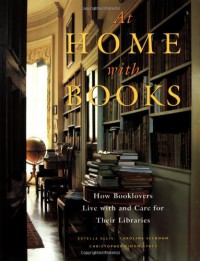 At Home with Books: How Booklovers Live with and Care for Their Libraries
At Home with Books: How Booklovers Live with and Care for Their LibrariesBy: Estelle Ellis, Caroline Seebohm, and Christopher Simon Sykes
Published By: Carol Southern Books
At Home with Books: How Booklovers Live with and Care for Their Libraries
This is basically a coffee table book filled with great photography, featuring outstanding home libraries. Most of the libraries featured are of the rich and famous.
The book contains how-to chapters on organizing your library, collecting, design, bookbinding, etc. These chapters were written by Estelle Ellis and Caroline Seebohm. Additionally, many of the owners of the libraries featured are interviewed, by them.
The photography was done by Christopher Simon Sykes. Sykes did a fantastic job in showing the reader books, bookshelves, and libraries. These photographs provide many ideas which can be use to design ones own home library.
I would like to be able to transform my 14X14 library, into a more sophisticated design.
Currently, I try to keep a place where is can sit and read with comfort. No television or telephone, (but I do have a ½ bathroom). I have many books stored in my office, bedroom, and basement. I don’t have room to enlarge.
While the book is a little dated, I have increased my knowledge on home libraries and now know in which direction I want to go. I will keep the book on the coffee table for reference.
 The Alchemist
The AlchemistWritten By: Paulo Coelho (Translated by Alan R. Clarke)
Published by: Harper One
The Alchemist
This is a story about a young man, Santiago, a shepherd, who has dreams that sends him on a journey, to find a treasure. Santiago meets many people and has many challenges in his travels. He continuously develops and learns from these experiences.
Santiago’s parents had wanted him to be a priest; however, while studying in school he realized that this was not what he wanted. His father then gave him money to buy a flock of sheep, since Santiago thought being a shepherd was what he wanted. This gave him the opportunity to travel around and meet other people and see other towns. While traveling with his sheep he had the same dream twice. Santiago’s dreams led him to a fortune teller which began his travels to foreign lands.
The book had adventure, fantasy, inspiration, and spirituality. I think cultural background may have a significant impact on one’s interpretation and understanding of this story. I found the tone of the story very calming.
 1
1
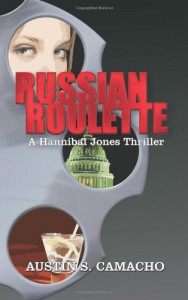 Russian Roulette
Russian RouletteA Mystery/Thriller
Author - Austin S. Camacho
Russian Roulette
Intrigue Publishing
Springfield, VA
Russian Roulette is part of the Hannibal Jones series. Hannibal is a P.I. in Washington, D.C. who is this book gets involved with a Russian Mafiya killer, Aleksandr Ivanovich, who seeks his help in protecting Viktoriya Petrova a young woman, who he loves. It seems that Viktoriya, a beautiful woman of Russian decent, is sought after by every man that she comes in contact with.
It is a great story with many twisted and turns including murder, mob money, theft, etc. Hannibal starts out by trying to get information about Viktoriya’s fiancée, for Ivanovich. Ivanovich is convinced that the fiancée is not who he claims to be. This puts Hannibal in his Volvo, Black Beauty, driving the streets of D.C. and its suburbs (both Maryland and Virginia) tracking evidence and solutions to the many problems created in the search for the truth.
I really liked the story. If you read Collateral Damage by the author I think you will enjoy this book even more.
Poker!
 Poker!
Poker!Written by: Zora Neale Hurston, Copyrighted in 1931
Published By: Public Domain (Amazon) Kindle Edition
The play was transcribed from the original handwritten manuscript, complete with penciled notations.
Poker!
Characters:
Nunkie
Too-Sweet
Peckerwood
Black Baby
Sack Daddy
Tush Hawg
Aunt Dilsey
Poker! is a very short play that takes place in a dingy front room of a shotgun house in New York. The play centers on a host of characters playing poker and talking a bunch of “smack.”
Aunt Dilsey comes in and tells them they are all going to go to hell for “gamblin’ and carryin’ on.” While she is talking the poker players are pulling aces out of their sleeves, vest pockets, and shoes.
More then one player ends up with four (4) aces and they argue. Guns come out and the shooting starts.
In the end, Aunt Dilsey returns and observes the bloodshed. She says, “They wouldn’t lissen -- It sure is goin’ to be a whole lot tougher in hell now!”
Zora Neale Hurston was an African-American woman, born in 1891. During the time the play was written she lived in Westfield, New Jersey, a short distance from New York City. My assumption is that the play’s setting is Harlem, in 1931 at the tail-end of the Depression and the Harlem Renaissance.
This was a dispirit time and the poker players were probably disheartened men. They apparently thought nothing about cheating to get money. Everyone can not have four (4) aces. In the end it was everyone’s loss.
Hurston a trained anthropologist uses the colloquial language of the day, in the play. She is writing about a class of people who are different from her background. I am not convinced that she really understands the people she is writing about. Further, I question whether gender had any influence in her portrayal of men playing poker.
 My Bondage My Freedom
My Bondage My FreedomWritten By: Frederick Douglass
Published By: Public Domain (Amazon) Kindle Edition
My Bondage My Freedom
I have read in the past about Frederick Douglass the famed abolitionist, orator, statesman, and writer. However, until reading this autobiography I knew nothing about him before he became famous.
This autobiography was published in 1855 and thus covered approximately thirty-seven (37) of his early years. Being born a slave, Douglass could only approximate the year of his birth. He lived an additional forty (40) years, after 1855, which are not covered in this book.
The autobiography covered his childhood years on the eastern shore of Maryland, first with his grandmother, and then his transfer to a sort of holding area for young slaves until it was decided where they would end up. Douglass only remembered seeing his mother once before leaving his grandmother. He saw her later at the “big house” and heard that he was the product of his owner and his slave mother. He had a hard time understanding why he was a slave, and his place in the world.
Slaves had no choices in their lives and Douglass here was no different from other slaves. At first, he faired well, for a slave, being sent to be the companion to his owner’s nephew. There he learned to read from his mistress, who being from the north did not know this was forbidden. When telling her husband how well Douglass was learning she was told she should stop her lessons, at once. However, Douglass had learned enough to continue to study, on his own. The first book Douglass was able to purchase was “The Columbian Orator,” which contained over eighty (80) noteworthy speeches of prominent individuals. Most school-aged men studied this book and Douglass hid it and studied it whenever he had free time. Later, after a disagreement between his owner and current master he was sent back to work in Annapolis.
Douglass could not get along with his master and was sent to a farm to be “broken,” by a person who had a reputation for dealing with slaves who failed to do as they were told. He did not fair well and was beaten everyday for a while and ended up walking back to his owner, stating that he would do as he was told if he could come back. His owner refused and he had to go to the farmer.
Douglass could not deal with his bondage, and later escaped slavery. Being a fugitive slave had its problems, but, he felt free. He found it hard to make a living and through friends and acquaintances found that he had a gift of being a fine orator, and was often requested to tell his story. He wanted to do more than tell his story and ended up becoming an abolitionist who went around the northeast giving speeches. Later, he went to England and thereafter, friends collected enough money to purchase his freedom.
Seeing pictures of Frederick Douglass dressed in fine clothes, I never knew that under his shirt and coat was the scared back of a slave.
The end of the book contained many of his speeches, but the highlight of the book for me was his story of his life in bondage. This new knowledge has given me an even higher opinion of Frederick Douglass, slave, abolitionist, orator, statesman, and writer.
Great Children's Stories
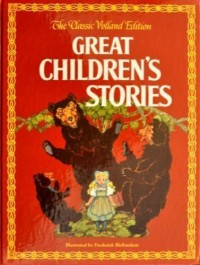 Great classic stories which I read to my children. They loved to listen to the stories and later read to each other. The illustrations by Frederick Richardson were well done.
Great classic stories which I read to my children. They loved to listen to the stories and later read to each other. The illustrations by Frederick Richardson were well done.I noticed one of my daughters reading it when she came home from college, one weekend. The book is still in our library.
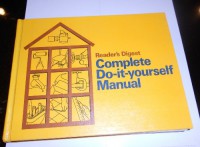 This is a great book for DIYers. I have owned the book for over thirty (30) years, and still use it. I am sure there is a newer version and also plenty of on-site information.
This is a great book for DIYers. I have owned the book for over thirty (30) years, and still use it. I am sure there is a newer version and also plenty of on-site information.
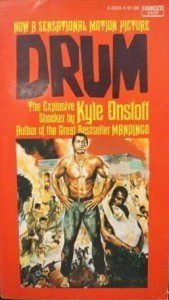 I read this book many years ago. I don't remember the whole story; however, I remember it is about slavery in the U.S. I think this is a historical fiction because the book actually reflexes many of the atrocities that actually occurred during slavery. The characters are not real; however, slave owners, overseers, and slaves are a historical fact. Slaves had to work as house and field slaves under owners and overseers who saw them as property rather than human beings. Slaves had to live in poor conditions, off what ever was provided them. Further, unwanted sex and violence were wrongs that slaves had to endure.
I read this book many years ago. I don't remember the whole story; however, I remember it is about slavery in the U.S. I think this is a historical fiction because the book actually reflexes many of the atrocities that actually occurred during slavery. The characters are not real; however, slave owners, overseers, and slaves are a historical fact. Slaves had to work as house and field slaves under owners and overseers who saw them as property rather than human beings. Slaves had to live in poor conditions, off what ever was provided them. Further, unwanted sex and violence were wrongs that slaves had to endure.Life on the plantation was and great. The author capitalized on human nature by exploiting our fascination with sex and violence. One thing I do remember is that, I enjoyed the book and read the other books in the series.
Master of Falconhurst
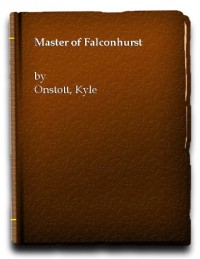 I read this book many years ago. I don't remember the whole story; however, I remember it is about slavery in the U.S. I think this is a historical fiction because the book actually reflexes many of the atrocities that actually occurred during slavery. The characters are not real; however, slave owners, overseers, and slaves are a historical fact. Slaves had to work as house and field slaves under owners and overseers who saw them as property rather than human beings. Slaves had to live in poor conditions, off what ever was provided them. Further, unwanted sex and violence were wrongs that slaves had to endure.
I read this book many years ago. I don't remember the whole story; however, I remember it is about slavery in the U.S. I think this is a historical fiction because the book actually reflexes many of the atrocities that actually occurred during slavery. The characters are not real; however, slave owners, overseers, and slaves are a historical fact. Slaves had to work as house and field slaves under owners and overseers who saw them as property rather than human beings. Slaves had to live in poor conditions, off what ever was provided them. Further, unwanted sex and violence were wrongs that slaves had to endure.Life on the plantation was and great. The author capitalized on human nature by exploiting our fascination with sex and violence. One thing I do remember is that, I enjoyed the book and read the other books in the series.
 I read this book many years ago. I don't remember the whole story; however, I remember it is about slavery in the U.S. I think this is a historical fiction because the book actually reflexes many of the atrocities that actually occurred during slavery. The characters are not real; however, slave owners, overseers, and slaves are a historical fact. Slaves had to work as house and field slaves under owners and overseers who saw them as property rather than human beings. Slaves had to live in poor conditions, off what ever was provided them. Further, unwanted sex and violence were wrongs that slaves had to endure.
I read this book many years ago. I don't remember the whole story; however, I remember it is about slavery in the U.S. I think this is a historical fiction because the book actually reflexes many of the atrocities that actually occurred during slavery. The characters are not real; however, slave owners, overseers, and slaves are a historical fact. Slaves had to work as house and field slaves under owners and overseers who saw them as property rather than human beings. Slaves had to live in poor conditions, off what ever was provided them. Further, unwanted sex and violence were wrongs that slaves had to endure.Life on the plantation was not great. The author capitalized on human nature by exploiting our fascination with sex and violence. One thing I do remember is that, I enjoyed the book and read the other books in the series.
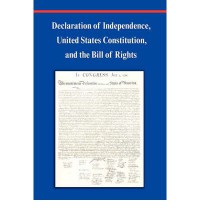 These documents were part of the required reading of my American history and civics classes. While being historic they are still documents that play a major part in my everyday life.
These documents were part of the required reading of my American history and civics classes. While being historic they are still documents that play a major part in my everyday life.
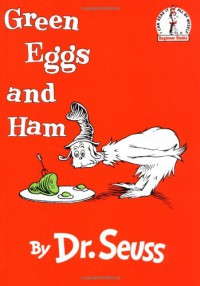 I was never a fan of Dr. Seuss books. My mother purchased this book and I read it to my younger siblings. They seemed by like the colorful pictures and rhyming verses.
I was never a fan of Dr. Seuss books. My mother purchased this book and I read it to my younger siblings. They seemed by like the colorful pictures and rhyming verses.It was a fun book for younger children so I, later, purchased it and read to my kids.







